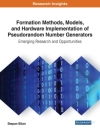Computing Reality is a rare and challenging research output in the area of cybernetic and system theory explaining the meaning behind the understanding, interpretation and application of scientific methodology for knowing scientific truth. The fundamental goal of Computing Reality is to explain how knowledge in scientific investigation can be derived, organized and deciphered in the light of unity of knowledge as the episteme. The book uses these foundational socio-scientific ideas in areas of philosophy of science, economics, society and science and computer modeling to explain specific socio-scientific problems in the light of the foundational conceptions and their application. Computing Reality invites the reader into understanding a fresh new look at the nature of relations between reasoning, science, and society. Special reference is given to certain fundamental issues of economics and world-system in the context of liberalism, globalization and Islam. The technical along with a generalist treatment in the book presents a comprehensive originality of a phenomenological model whose origin lies in a systemic and cybernetic view of unity of knowledge. Some of the new ideas presented here can be of a substantively provocative nature to the serious student, academic and researcher in philosophy of science. The book is nonetheless written for the generalist informed reader as well, enabling the interface with today’s increasing consciousness on the relationship between religion, morality, ethics, science and society. The book may be considered as a pioneering contributing to post-modernist criticism of foundational questions of science and society. Computing Reality is a contribution in the area of system and cybernetic theory examined from the perspective of science and society interrelationship. It goes beyond the modern contributions in this area by proving with conceptual and applied depth the function nature of the phenomenological model of unity of knowledge qua religion, science and society.
विषयसूची
DEDICATION
ACKNOWLEDGMENT
FIGURES GLOSSARY OF ARABIC TERMS
CHAPTER 1: INTRODUCTION
CHAPTER 2: REVIEW OF THE LITERATURE: CYBERNETICS IN SOCIO-SCIENTIFIC SYSTEMS
CHAPTER 3: A COMPUTERIZED MODEL OF COMPUTING REALITY: A CASE OF ASSESSING SYSTEM RISK CAUSED BY FLOODING
CHAPTER 4: CONTRASTING MEANINGS OF REALITY IN SYSTEMS FRAMEWORK
TECHNICAL APPENDIX TO CHAPTER 4: MULTIDIMENSIONAL SYSTEMS PHENOMENON
CHAPTER 5: PHENOMENOLOGY AS CONSCIOUSNESS IN LEARNING SYSTEMS
CHAPTER 6: NEUROCYBERNETIC AND UNITY OF KNOWLEDGE ACCORDING TO THE SCHOLASTIC THINKER, ABU HAMID Al- GHAZALI (1058-1111)
TECHNICAL APPENDIX TO CHAPTER 6: THE TOPOLOGICAL SUPERSPACE OF Ω
CHAPTER 7: WORLDVIEW AS UNIVERSAL PARADIGM IN UNITY OF KNOWLEDGE
TECHNICAL APPENDIX TO CHAPTER 7: SIMULATION BY MEANS OF CIRCULAR CAUSATION RELATIONS
CONCLUSION
लेखक के बारे में
M. Shahadat Hossain, Ph.D. is Associate Professor and Chairman of Computer Science in the Department of Computer Science, Chittagong University, Bangladesh.












